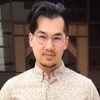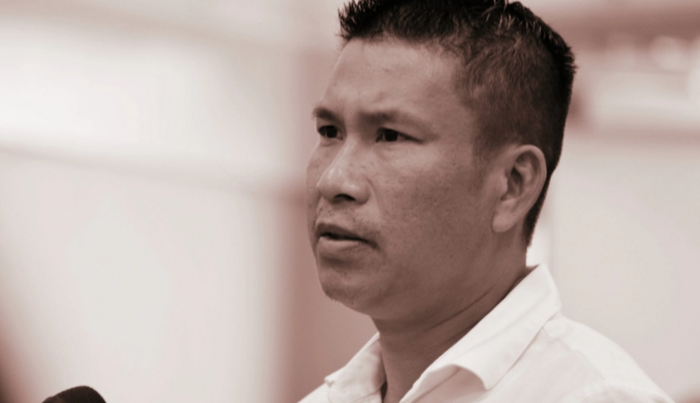
I wrote last year’s 10 Times Asian Americans Took On Systemic Racism out of frustration with end of the year listicles that seemed to reduce Asian American struggle to Hollywood representation. I wanted to shine a light on the ways Asian Americans were critically confronting housing displacement, U.S. imperialism, deportations, and state surveillance. Given the wealth of contemporary Asian American activism, primarily led by working-class, incarcerated, women, gender non-conforming, disabled, and/or undocumented people, the job of compiling a few stories of Asian American resistance was easy ― and I was pleased that the list seemed to resonate with folks looking for stories of Asian American resistance.
More and more, I believe that movements depend on stories. We know the U.S. mainstream has its story of Asian Americans: it’s a story of a politically passive, monolithic community of high achievers ready and willing to align with the violence of white supremacy and capitalism. But sometimes, it seems that even in our critiques of the model minority we can end up reinforcing this story: by tokenizing the most vulnerable Asian American subgroups as proof of our oppressed status, positioning ourselves as allies rather than stakeholders in the fight for racial justice, or by publicly chastising ourselves over our alleged political apathy and proximity to whiteness.
As 2017 comes to a close, I want to ask: what are the stories we are telling ourselves? Are they helping, or harming — lifting up or silencing — grassroots organizing against the matrices of oppression Asian Americans face?
The following are a few stories that reflect Asian America not as a demographic category, or even a political vision, but as a political practice that resists imperialism, colonialism, capitalism, and all its attendant gendered/raced/classed modes of violence. This list is by no means comprehensive: I hope you’ll share the #AsAmMovementStories that have compelled you this year, and we can keep growing a culture of Asian American resistance.
-Mark
8. Standing behind affirmative action
2017 saw renewed attention to the issue of affirmative action, with Asian Americans in the divisive spotlight. This year, Chinese Americans in particular continued to be cast in the role of the straight-A student denied their rightful place in the Ivy League because of unfair “racial preference.” The barely-coded implication that whites and Asian Americans are being discriminated against by affirmative action policies for supposedly underqualified Black, Latinx, and Native American students took headlines again when Jeff Sessions’ Department of Justice announced in August that it would investigate “intentional race-based discrimination in college and university admissions.”
The investigation is focusing on Harvard, which has been the subject of a lawsuit filed in 2014 by legal provocateur Edward Blum and the Asian American Coalition for Education, which alleges an “Asian quota” at Harvard and other elite schools. (Incidentally, Harvard’s class of 2021 boasts a 22.2 percent Asian American student body, a record high for the university.) Blum, who has chosen Asian Americans as the face of his new suit, was also responsible for the Supreme Court case that gutted the Voting Rights Act in 2013.
While the Asian American Coalition for Education “welcomes” the DOJ investigation, progressive and leftist Asian Americans have been quick to reorient the conversation and represent the 65% of Asian Americans that support affirmative action policies, which have no basis for illegal negativeaction policies like the quotas Blum and the AACE allege. As of August 2017, over 135 Asian American and Pacific Islander groups had signed onto a joint statement in support of affirmative action policies. That same month, Asian American commentators came together to host a #NotYourWedge Twitter townhall, calling attention to Asian American ethnic groups underrepresented in higher education, the need to situate affirmative action as redressinghistories of racial injustice, problematizing the racist roots of meritocracy, and troubling the research of Thomas Espenshade oft-cited as “proving” anti-Asian admissions bias.
As the DOJ threatens to sue Harvard over noncompliance in its probe, the fight to disrupt antiblack narratives of Asian American meritocracy and deservingness are sure to continue in 2018 and beyond.
Read more in Reappropriate: Asian Americans and Pacific Islanders (#AAPI) Writing in Support of Affirmative Action.
7. SF “comfort women” statue marks Japanese imperialism and sexual violence
Years of silence-breaking and community organizing culminated with the September unveiling of a comfort women memorial in San Francisco’s Chinatown plaza. The memorial honors more than 200,000 women from Korea, China, Taiwan, the Philippines, and Indonesia — euphemistically known as “comfort women” — who were forced into Japan’s military prostitution system during World War II. The statue has not been without its controversies — San Francisco’s Japanese sister city, Osaka, cut ties with SF because of the statue. Japan claims that such memorials violate a 2015 apology and payment to South Korea that, despite purporting to be a “final and irrevocable resolution” to the painful history, has failed to satisfy many survivors and their advocates.
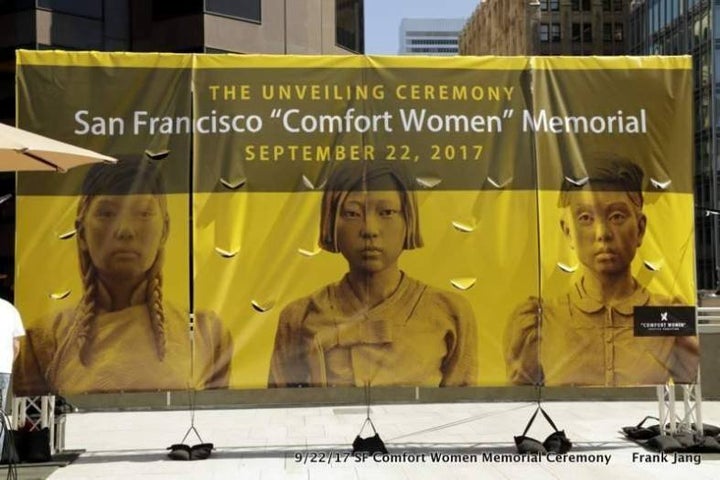
The SF monument is a testament to years of organizing by groups such as the “Comfort Women” Justice Coalition, which called out Japan’s “obstruction and denialism, including its blocking of people’s attempts to build memorials all over the world” in a statement marking the unveiling. “Much of the work was done away from the spotlight,” the statement continued, reflecting the contributions of countless volunteers, activists, scholars and students.
Groups like CWJC have placed the comfort women issue in the context of the larger struggle “against all forms of sexual violence [and] the sexism, racism, colonialism, militarization, and war that fuel it.” To that end, CWJC has implicated the U.S.’s own imperial agenda and its “pivot to Asia” in aiding and abetting Japan’s historical denialism.
The fight for justice and proper memorialization for “grandmothers” impacted by Japanese wartime sexual violence stretches from U.S. college campuses such as San Francisco State University — where protesters fighting for ethnic studies have invoked remembrance of comfort women as emblematic of the need for a discipline that critically engages the histories of communities of color — to Okinawa and the Philippines, where local fights against U.S. military bases and the gender violence they fuel continue.
The fruit of tireless community organizing, the SF memorial is a symbol of the ongoing fight against all forms of imperialism, and a reminder that remembrance is indeed a form of resistance.
Read more: CWJC Statement at Unveiling of the Memorial for “Comfort Women” in San Francisco. Donate to CWJC here.
6. Demanding justice for Tommy Le
On June 14, 20-year-old Tommy Le was fatally shot by Seattle police, the same day he was set to graduate from a high-school completion program at South Seattle College. In the aftermath of the shooting, a Seattle sheriff’s spokeswoman said the officers believed Le was holding “what they thought was a knife.” It took a week for the Sheriff’s Office to report that Le had in fact been holding a pen when he was shot three times by Seattle police.
Le’s family and the Vietnamese American community of Seattle have come together to challenge the police department’s murky, shifting narrative of the circumstances of Le’s death. An autopsy released in September showed Le was shot twice in the back and once in the back of his hand. “There are no scenarios where you would shoot someone in the back because they are attacking you” the Le family’s lawyer said during a press conference. Le’s murder energized groups such as “Viets Who Give a Shiet” and “Justice For Tommy Le,” who organized a public forum in July during which hundreds of community members called for an independent inquiry into the shooting death.
Young activists say the tragedy is galvanizing a new era of Vietnamese American activism, one that draws critical connections to antiblack state violence while navigating the particular traumas of the Vietnamese experience. In an interview with Seattle Weekly, Justice for Tommy Le leader Yenvy Pham said: “We are new to this country, but within the four generations of being here, we have been inspired by the black community to be outspoken and face injustices.”
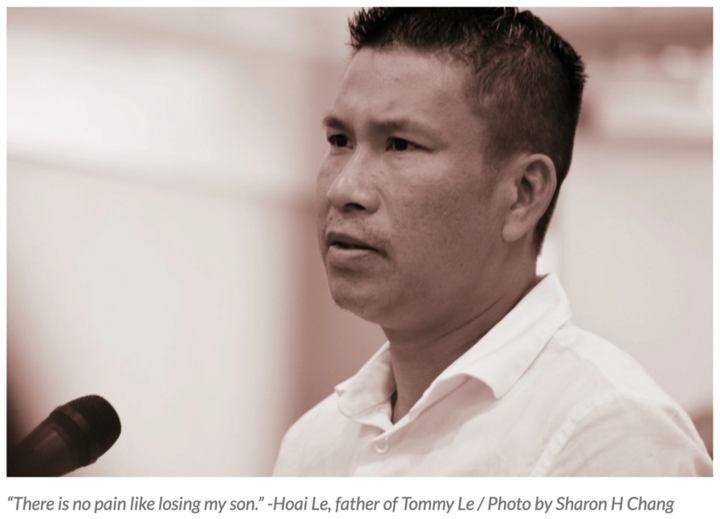
Followed less than a week later by the police murder of black Seattle mother Charleena Lyles, Le’s death has prompted important conversations about the stakes for non-black Asian Americans in the Black Lives Matter movement and the fight against police violence. Out of senseless tragedy, Le’s family and community are setting a course for Asian American activism that builds power and coalitions around state violence against black, indigenous, immigrant and refugee communities.
What you can do: Sign and share Justice for Tommy Le’s petition demanding a voice for Tommy Le’s family during the King County inquest into the shooting.
5. Confronting imperialism, orientalism in the U.S.-North Korea “conflict”
This year saw Donald Trump recklessly stoke tensions with North Korea, promising “fire and fury” against the nation to punish Kim Jong Un’s pursuit of a nuclear weapon. While experts agree that a North Korean nuclear weapon would serve as a defensive deterrent against a U.S.-backed toppling of the Kim regime, that hasn’t stopped U.S. politicians and pundits from commencing with the genocidal commentary. A particularly outlandish September op-ed in the New York Post outlined a supposedly “moral” solution: “better a million dead North Koreans than a thousand dead Americans.”
Korean Americans have been quick to point out the hypocrisy of U.S. policy on the Korean peninsula. U.S. bombings during the Korean War killed almost 30% of North Korea’s population, and in the decades since the U.S. has adopted cruel sanctions on everyday resources like coal and oil that punish North Korean civilians. As white Americans try to sift “good” (South) Koreans from “bad” (North) Koreans, many reunification activists in Korea and the diaspora have stressed that the supposed binary depends on an arbitrary border drawn at the 38th parallel by the United States in 1945, which separated10 million Koreans from their family members.
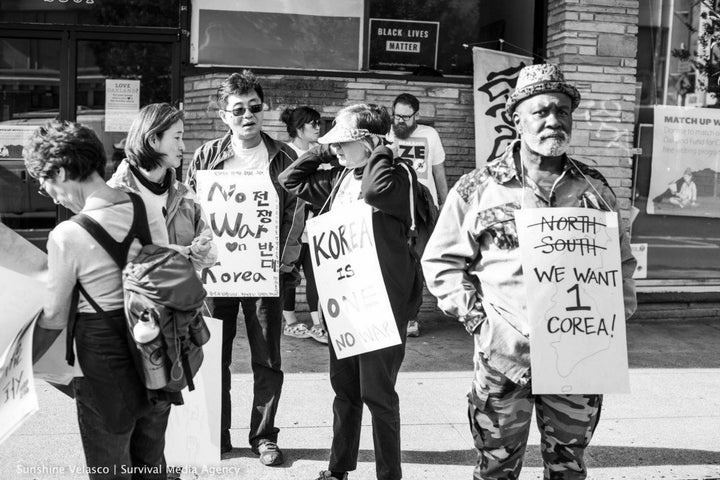
In November, Bay Area activists marked the anniversary of the end of World War I to hold a Korean Peace Walk, marching for 2 hours along historic sites of Bay Area activism while pounding drums and waving banners in English and Korean reading “No war on Korea” and “U.S. troops out now — Korea is one land.” Meanwhile, Korean American community group Nodutdol launched an oral history project with Korean elders about their experiences during the war, which was shared as a multimedia performance in Queens. The #KoreanPeace Twitter chat also lifted up Korean/American perspectives on U.S. imperialism, drawing links to militarism in the Pacific, orientalist media coverage of North Korea, and South Korean protests against a U.S. missile-defense system housed in Seongju, a southern farming town whose residents worry about the potential harm of the system’s electromagnetic radiation.
Korean/American activists opposing U.S. warmongering on the Korean peninsula remind us that U.S. imperialism and war has always been a crucible of Asian American political identity — from the rise of the Asian American Movement during the Vietnam War to the current fight against Trump’s genocidal “fire and fury.”
Read more: THAAD Will Not Protect South Korea, Korea Exposé.
Ju-Hyun Park, America’s Forever War and the Cost of Assimilation
4. Practicing community care in the face of hate, violence and Islamophobia
Donald Trump’s first year in office coincided with an upsurge in Islamophobic hate violence, no doubt stoked by Trump’s fear-mongering rhetoric of terrorist threats and his administration’s repeated Muslim Ban attempts.
In February, Srinivas Kuchibhotla was fatally shot and Alok Madasani was wounded by shooter Adam Purinton at a Kansas restaurant. Purinton, a white man, allegedly yelled “get out of my country” and “terrorist” before firing. In March, Harnish Patel, a South Carolina convenience store owner, was found dead by gunshot wounds in the front yard of his home. The same month, Sikh American Deep Rai was shot and injured in front of his Seattle home by an attacker who reportedly yelled “go back to your country.” The list goes on, including the fatal stabbing of two Portland man who intervened when a white supremacist harassment two African American young women with anti-Muslim slurs.
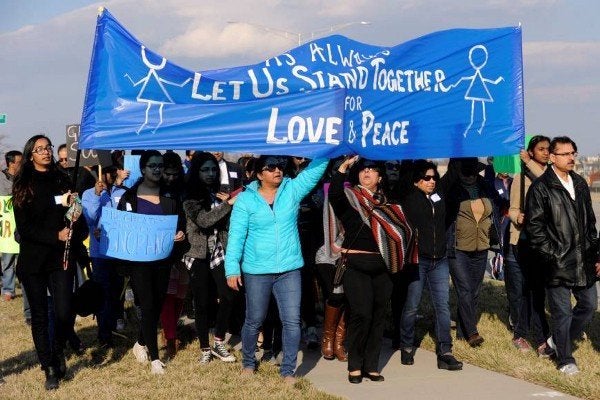
In the face of community threats of violence, Muslim and South Asian American communities have rallied to find strength in solidarity and mutual support. A fundraiser to support the family of Srinivas Kuchibhotla raised over four times its initial $150,000 goal, and hundredsacross the country gathered at vigils to honor Kuchibhotla’s memory and stand against rising hate crimes. Meanwhile, community groups such as Desis Rising Up and Moving (DRUM) have been proactive in building safe community spaces, launching the innovative Hate Free Zones project to build mutual support across frontline targeted communities, and conducting community check-ins after an attempted pipe bombing in New York’s Port Authority left Brooklyn’s Bangaldeshi-Muslim community feeling vulnerable to vigilante retaliation.
It’s time to keep investing in creative models of community safety that offer much-needed alternatives to relying on the police state to protect the very communities police target with racist surveillance.
Support DRUM’s Hate Free Zones project, legal services, and youth leadership programs by donating here.
3. #CleanDreamAct demands amnesty with no border militarization
Living up to the anti-immigrant tenor of his campaign, Donald Trump announced in September he would end Deferred Action for Childhood Arrivals (DACA), an Obama-era program that granted deportation relief and work permits to immigrants who came to the U.S. as children. Undocumented Asian Americans between 15 and 36 make up some 10 percent of the DACA-eligible population, and over 16,000 of DACA’s 800,000 recipients are Asian American.
Undocumented activists, Asian American community groups, and other activists have ramped up pressure on the administration to protect undocumented youth. In August, marking the 5 year anniversary of DACA’s implementation, NAKASEC held a 22-day “Dream Action” in support of DACA, Temporary Designated Status (TPS) protection for South Sudan and Sudan, and a legislative Dream Act. Following Trump’s announcement of DACA’s termination, Asian Americans have joined other immigrant community groups to build pressure on Congress to protect undocumented youth by passing the Dream Act, legislation first proposed in 2001 that would provide a path to legal permanent residency. Calls for a #CleanDreamAct have stressed that relief for undocumented youth should not be tied to border militarization or other punitive measures that criminalize parents and older undocumented immigrants. In November, 19 Asian Americans were arrestedin a demonstration in front of Speaker Paul Ryan’s office, demanding he put the Dream Act to a vote. On December 15, Latinx immigrant leaders staged a sit-in at Senate Minority Leader Chuck Schumer’s office, urging the Democratic leader to reject the Republican budget and force a government shutdown if Republicans don’t allow a Senate vote on the Dream Act.
On December 22, Congress passed a temporary spending bill that pushes the threat of government shutdown — and the leverage of tying the federal budget to the Dream Act — to January 19. For over fifteen years, Democrats have promised real immigration reform legislation to Asian American, Latinx, and Black immigrant constituents they take for granted come elections. As always, the fight to hold Democratic leadership accountable for their word in 2018 will depend on the grassroots organizing and direct action of immigrant activists.
Donate and support the work of Asian American undocumented-led organizations like RAISE and ASPIRE (sponsored by the Asian Law Caucus).
2. Refugee communities rally against new wave of deportations
During four years of secret war in Cambodia amidst the Vietnam War, the United States dropped some 2.7 million tonnes of bombs, directly killing a half million people and creating social upheaval that helped lead to Pol Pot’s rise to power. Now, the United States is conducting aggressive raids to deport refugees back to the same country they devastated decades ago.
ICE has begun unprecedented raids targeting both Cambodian and Vietnamese Americans, many of whom entered the country as refugees. For years, Cambodia had refused to accept deported citizens from the U.S. That changed this year after the U.S. placed visa sanctions on Cambodian officials to strongarm the country into accepting deportees. Now, ICE is expected to deport a record-breaking number of Cambodian Americans — some 200 in 2018. More than 200 Southeast Asian Americans were detained by ICE in November alone.
But community leaders and activists have refused to let ICE tear families apart without a fight. “We really need to dispel this myth that we’re here and we made it and the administration has our best interest in mind. We need to stand up for each other when our safety and daily life is at threat of being disrupted,” VietUnity activist Giao Tran told Mercury News. Lawyers from Advancing Justice — Asian Law Caucus helped win a rare month-long stay for 50 Cambodian Americans scheduled to be deported in December.
Many of those targeted by renewed ICE raids have served time for crimes committed as youth in poor, resource-starved resettlement communities, and have returned to their communities for decades to rebuild their lives. Criminalized in their youth, these individuals are caught in the wrong side of the “good immigrant/bad immigrant” binary that cloaks immigration justice in the language of moral and economic deservingness. A press release from Advancing Justice — Asian Law Caucus highlighted the stories of those targeted: “In the 22 years since my conviction, I have worked hard to support my family and give back to the community,“ said Mony Neth of Modesto, California, one of the plaintiffs in the lawsuit. “To be suddenly torn away from my wife, daughter, and elderly parents is devastating to all of us.”
Beyond legal challenges, refugee community resilience is also the result of long-term movement building. In October, Southeast Asia Resource Action Network held a “Southeast Asian American Equity Summit” to build community leadership and movement strategy amongst Cambodian, Hmong, Iu Mien, Lao, and Vietnamese American communities across the country — a model for investing in underrepresented voices to propel Asian American movements for justice forward.
Take action: support Southeast Asian American community organizations like PrYSM, Mekong — NYC, Vietlead, VietUnity, and SEARAC. The Returnee Integration Support Center, which works to support deported Cambodian citizens, is also seeking donations here.
Read more: Julianne Hing, How a Group of Immigration Attorneys Stopped a Deportation Flight to Cambodia, The Nation.
1. Ny Nourn walks free, 16 years later
Content warning: domestic abuse
After spending 16 years in prison, Ny Nourn was granted parole in January 2016, only to find herself behind bars once again only months later. This time, though, she was awaiting deportation to a country she’d never even been to.
Nourn is one of many women of color who have been criminalized as survivors of domestic abuse, caught at the intersections of the criminal justice system and immigration enforcement. Sentenced to 15 years to life in prison in 2003 for her role in her abusive partner’s murder of her boss, David Stevens, Nourn was convicted despite appeals from expert psychologists testifying that Nourn suffered from Battered Women’s Syndrome. But after serving her time and being granted parole, Nourn was swept up by ICE’s Criminal Alien Program, which grants ICE access to jails and prisons to search for “deportable” immigrants, and transferred from the Central California Women’s Facility to Yuba County Jail, awaiting deportation.
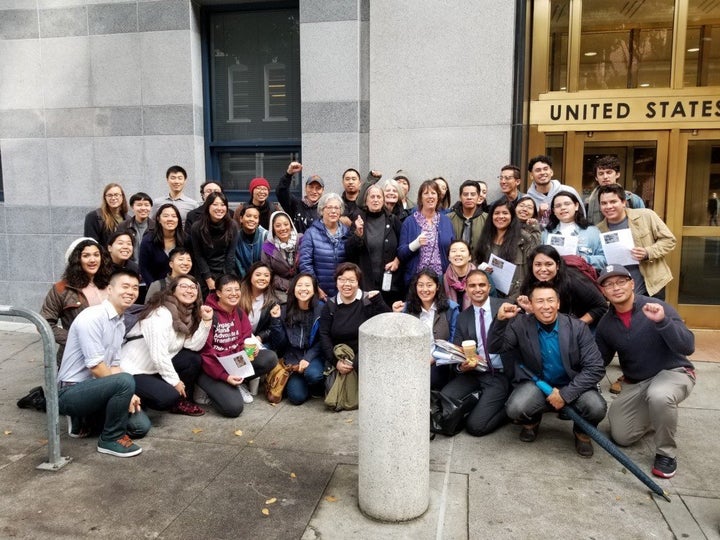
Yet, through the combined efforts of Survived and Punished, which leads freedom campaigns supporting survivors who live at the intersections of gender violence and criminalization, Advancing Justice — Asian Law Caucus, California Coalition for Women Prisoners, and the Asian Prisoner Support Committee, Nourn walked free in November after a grassroots campaignraised enough funds to meet her $10,000 bail.
Though Nourn is out of ICE detention, ICE continues to appeal her case to carry out her deportation to Cambodia, though she has never been there and fears that her abuser, Ron Barker, will use family ties in Asia to carry out his threats to have her killed. But Nourn promises to continue the fight. In a letter published by Survived and Punished, she wrote: “I am joining all of you outside in fighting for not just my freedom, but for the freedom of all of my sisters and brothers that I left behind inside.”
May we all learn from Nourn’s resilience, her organizing behind bars, and her dedication to supporting incarcerated survivors.
Read more: Victoria Law, After Abuse and Prison, a Woman Faces Deportation to a Country She’s Never Been To, Vice.
Take action: Nourn has asked supporters to sign a petition to stop the ongoing deportation of Cambodian refugees, and to ask California Governor Jerry Brown to give friend and fellow incarcerated survivor Kelly Ann Savage a chance at parole.
This post originally appeared on Medium.
